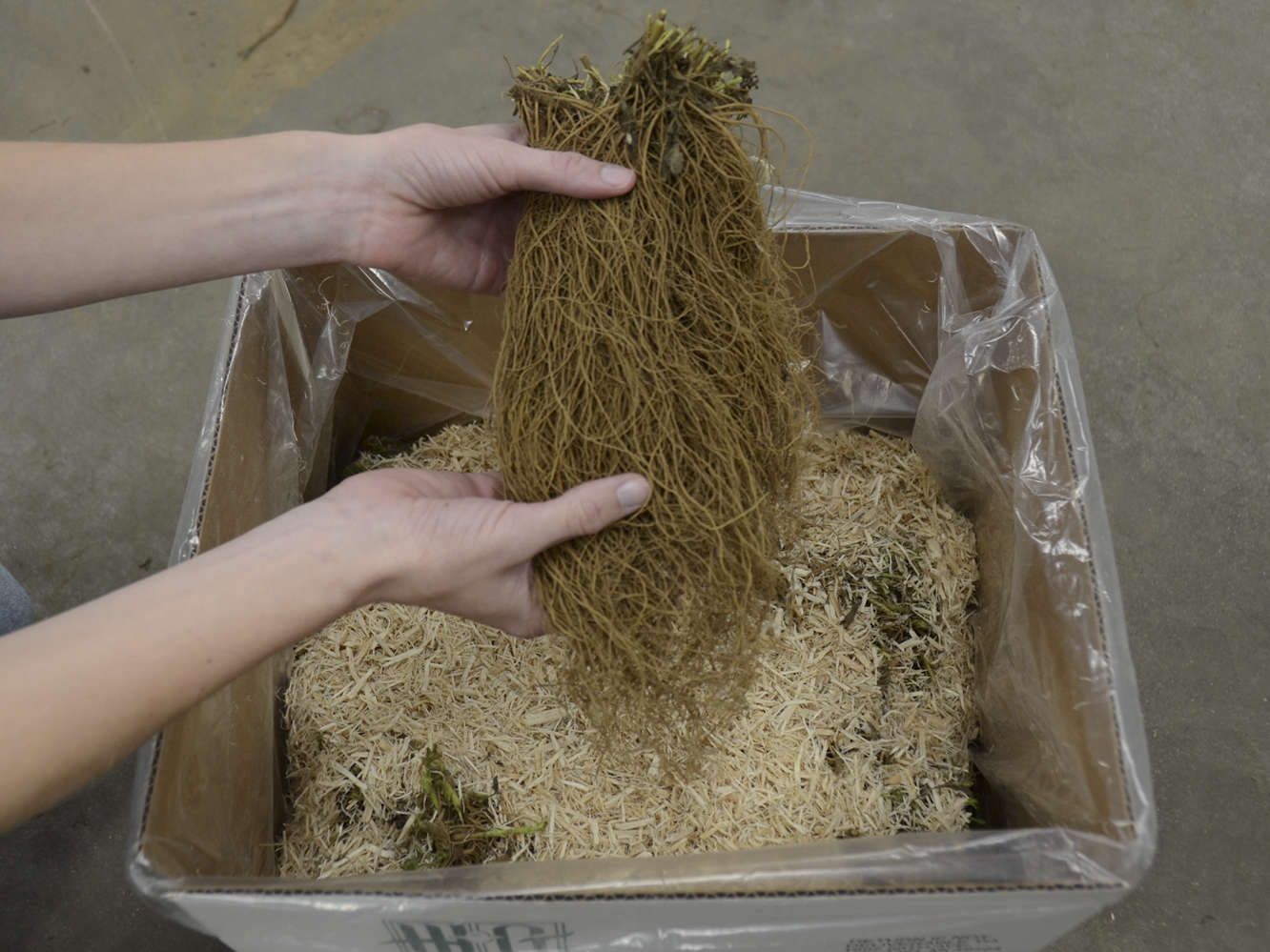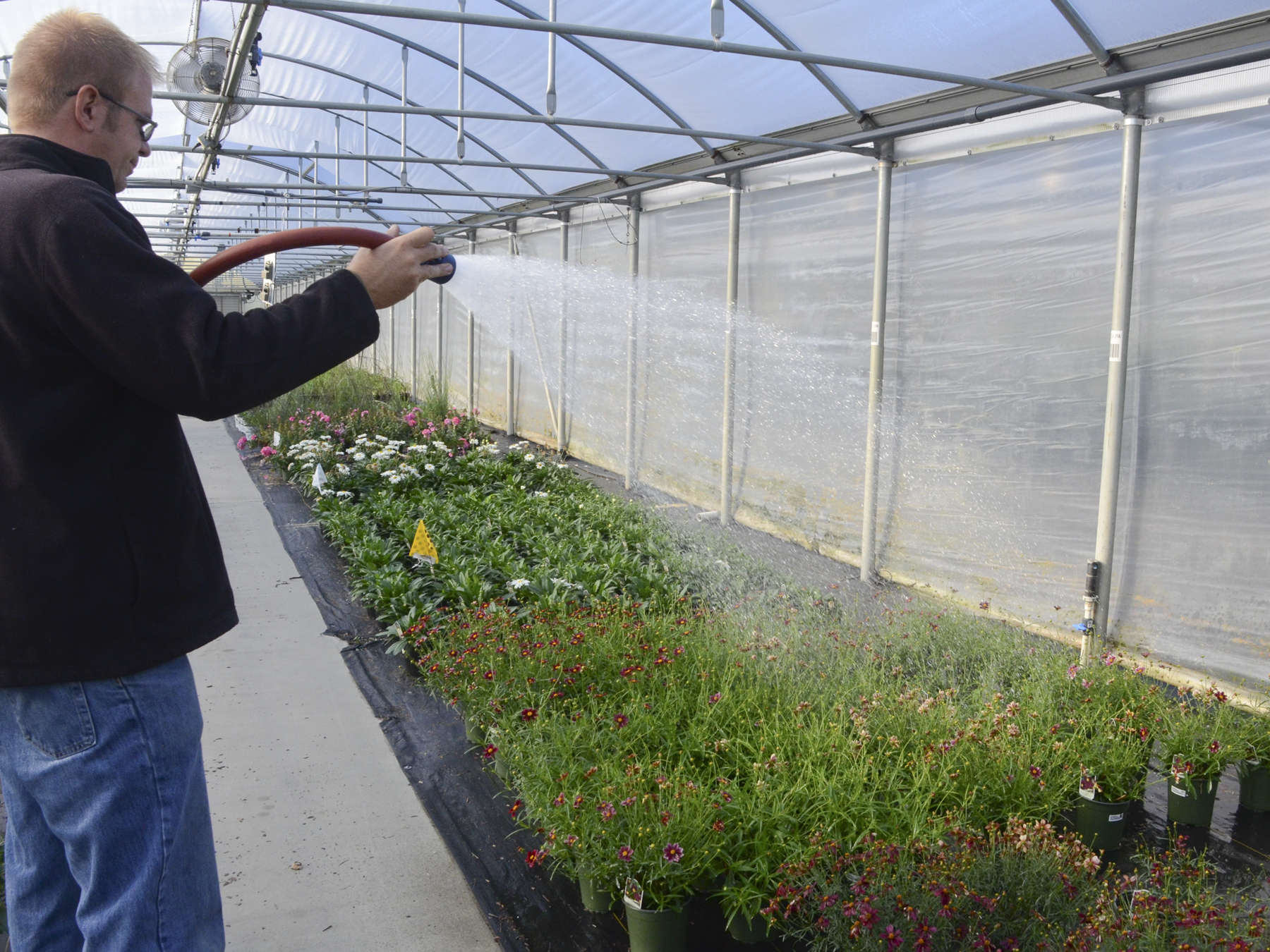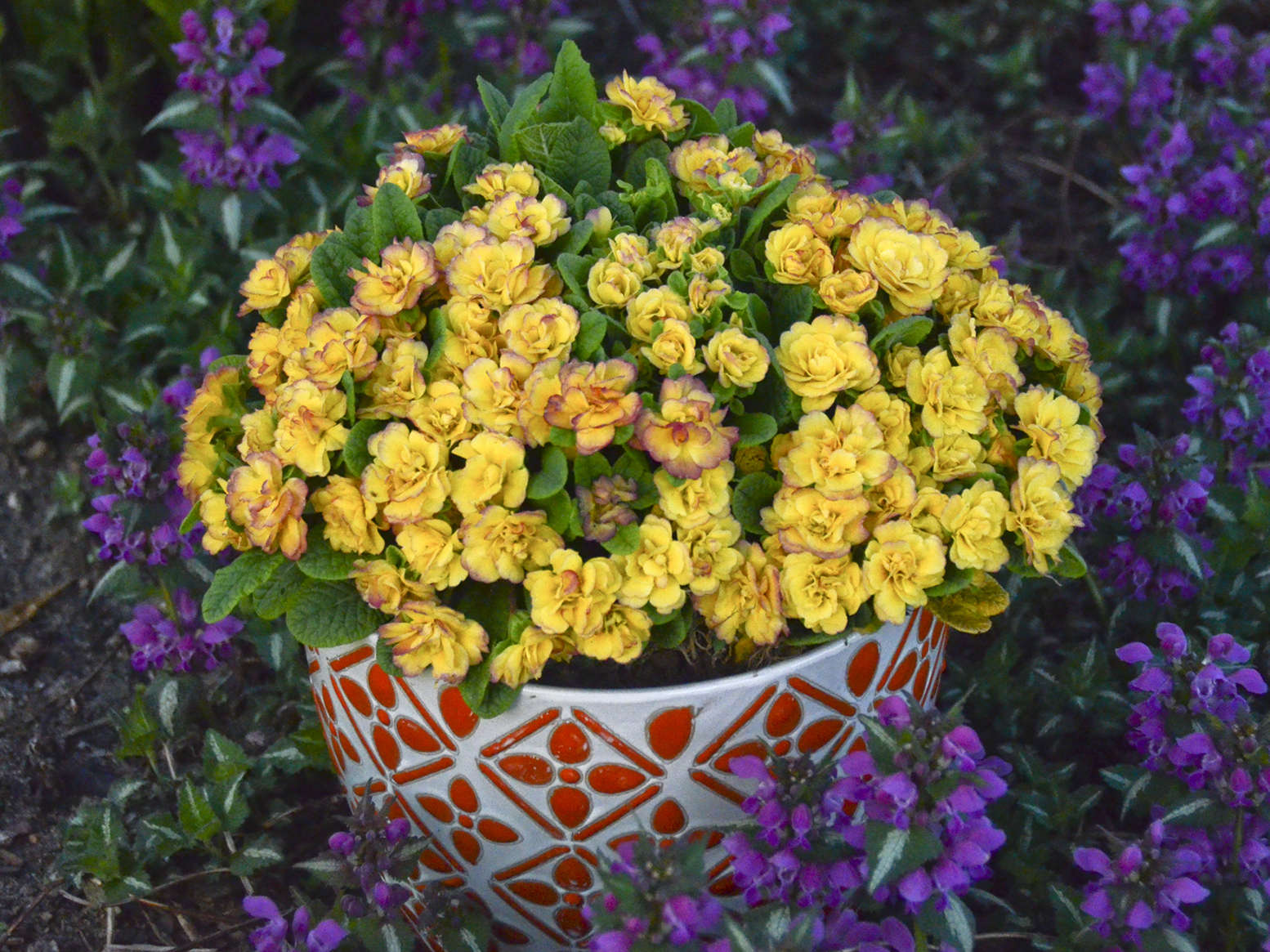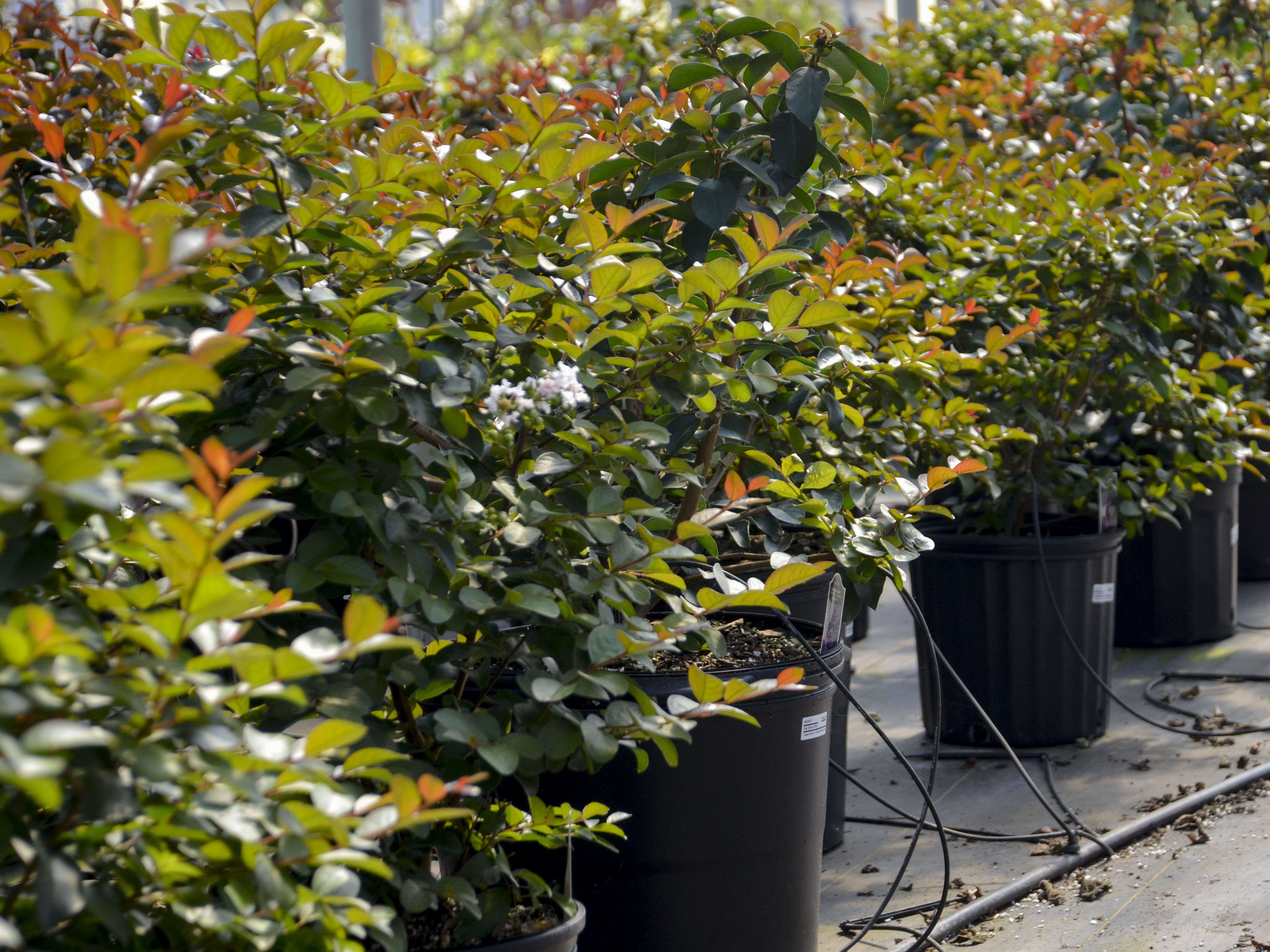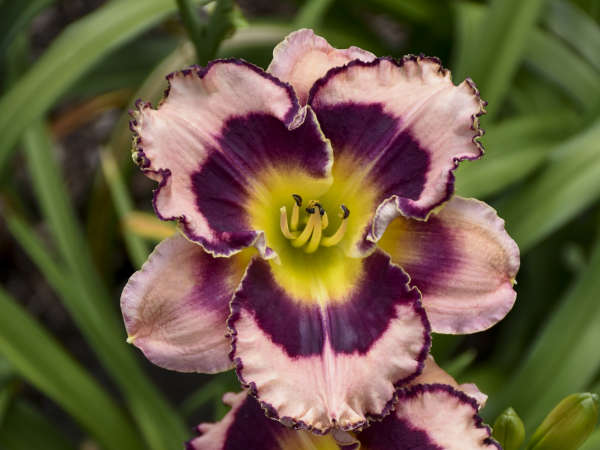How to Force Daylilies for Spring Retail Sales
09/19/2012
by Paul Pilon
Daylilies (Hemerocallis) have long been popular perennials at retail and in the garden because they are beautiful and very easy to grow. The challenge for retailers is having daylilies in bloom while retail traffic is at its peak since they naturally bloom in mid through late summer. Their colorful flowers increase their impulse appeal, especially with newer varieties like ‘Primal Scream’ and ‘Ruby Spider’ that have enormous 8-9 inch blossoms. Having plants in bloom while more customers are shopping greatly increases the sales potential for retailers.
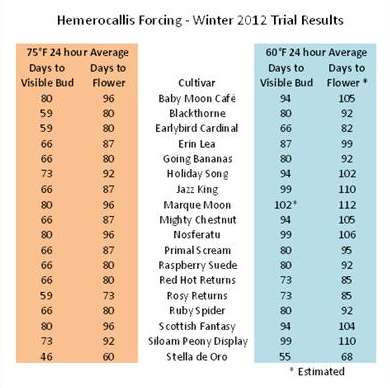
This year, Walters Gardens focused on trialing daylilies in two environments; warm temperatures (75° F) with 16 hour day lengths using day extension lighting, and cool temperatures (60° F) with natural day lengths. They used dormant, vernalized, bare root daylilies that were started in early January.
On January 9, 2012 the daylilies were placed into each of the trial environments. The time to reach visible flower scapes (visible bud) and to develop open blooms was recorded for each variety. The results are displayed in the table pictured right.
Day length did not have any effect on flowering in this trial; plants flowered under both natural and long days. This was likely because Hemerocallis are classified as day neutral plants. However, they do flower more uniformly and produce more flowers per plant when they are grown under high light intensities.
The time to flower varied for each daylily cultivar. The targeted 24 hour temperature averages were greatly influenced by the outside weather conditions and the ability to provide sufficient cooling on warm sunny days.
To extend their marketing and sales windows, some growers seek daylily cultivars that have long blooming periods and reblooming characteristics. Growers can also try forcing early, midseason, and late season varieties in order to extend the sales window. Having a range of bloom times offers a fresh look for the bench and new impulse sales opportunities as each new variety comes into bloom.
Another factor for growers to take into consideration is seasonality. Daylilies started later in the spring will take significantly less time to bloom than those that are started in the middle of winter, as was the case with this trial. My past experiences have indicated at least a two week reduction in the time to flower in daylilies that are forced beginning in March or April compared to those started in January and February.
It is not necessary to grow daylilies with very warm temperatures to get them to bloom. They will also bloom when they are produced with cool temperatures, but the production time will be slightly increased. In these trials, reducing the temperature from 75° F to 60° F increased the time to flower by 8 to 15 days for most cultivars. I recommend growing daylilies at 65° F in environments with high light intensities for best results.
Production Guidelines
Hemerocallis are easy to produce; using the following production guidelines combined with integrating the results from the forcing trials described above will improve crop uniformity, performance, and marketability. Daylilies are primarily started using bare root divisions. Most growers plant #1 grade bare root starting materials into one gallon sized containers filled with a well drained commercial growing mix. When planting, the crown should be buried slightly- 1/2 to 1-inch below the media surface. Water them in thoroughly after potting and place them in the production area.
Fertilization is generally not necessary during the first few weeks of production. Once established and actively growing, daylilies are moderate feeders. Fertility can be delivered using liquid fertilizer applications applying 75 to 125 parts per million (ppm) with every irrigation or 200 to 250 ppm once or twice weekly. Many growers deliver nutrients using controlled release fertilizers by incorporating using the low to medium recommended rate or by topdressing with the medium recommended rate. The pH of the media should be maintained between 6.2 and 6.7. Avoid over-fertilization as it may lead to soft growth.
To produce flowering daylilies for spring sales, transplant #1 grade bare root 8 to 15 weeks ahead of the intended sales window. Use the table above to determine the approximate time to flower for each specific variety. For cultivars not listed in this table, the time to flower can be approximated by blooming classification. For example, when growing daylilies with 24 hour average temperatures of 65° F in the late winter, early blooming cultivars will flower in approximately 8 to 10 weeks, midseason cultivars will bloom in about 11 to 13 weeks, and late season cultivars will take approximately 14 to 16 weeks to flower. If started in spring for mid to late summer sales, daylilies will need approximately 6-10 weeks to finish.
Growers looking to increase their early season sales of Hemerocallis can easily and cost effectively force them into bloom using the methods described above and confirmed in the trial by Walters Gardens, Inc.
Paul Pilon is a horticultural consultant, owner of Perennial Solutions Consulting (www.perennialsolutions.com) and author of Perennial Solutions: A Grower’s Guide to Perennial Production. He can be reached at paul@perennialsolutions.com or (616) 366-8588.
